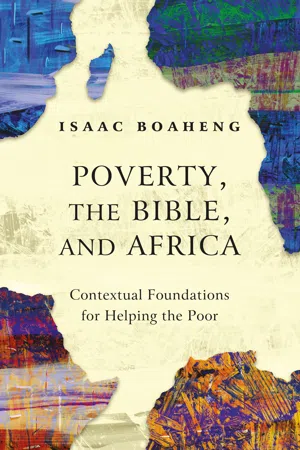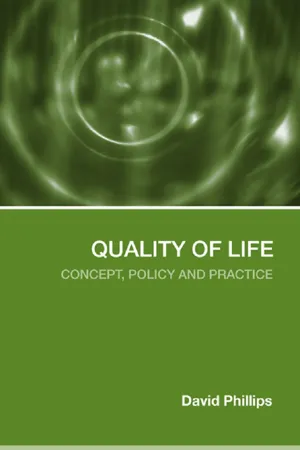Social Sciences
Consequences of Poverty
The consequences of poverty encompass a wide range of social, economic, and health-related impacts. These may include limited access to education and healthcare, higher rates of crime and violence, and increased vulnerability to environmental and natural disasters. Poverty can also perpetuate intergenerational cycles of disadvantage, affecting individuals, families, and communities.
Written by Perlego with AI-assistance
Related key terms
2 Key excerpts on "Consequences of Poverty"
- eBook - ePub
Poverty, the Bible, and Africa
Contextual Foundations for Helping the Poor
- Isaac Boaheng(Author)
- 2020(Publication Date)
- HippoBooks(Publisher)
[13]The Social Exclusion Approach
The social exclusion approach is the third perspective on understanding poverty. The social exclusion that poverty brings may be in the form of “either economic dimension (exclusion from the labor market opportunities to earn income) or a purely social dimension (exclusion from decision-making, social services, and access to community and family support).”[14] This approach to poverty emerged in France in the 1970s and 1980s as a means of explaining the precarious situation of the disadvantaged and marginalized due to their inability to take part in the major economic, political, and social enterprises.[15] The meaning of the expression “social exclusion” has metamorphosed over the years.[16] In the 1970s many people became unemployed due to decline in business activities. In such a context, the term exclusion was used to denote the process that led to the expulsion of people from the job market. In the 1990s, prevalent human rights issues led to defining “excludees” as those who are “partly or completely outside the effective scope of human rights.”[17]The social exclusion approach differs from the economic and capability deprivation approaches in that the latter focus on individual characteristics and circumstances while the former shifts attention to the relational quality of life (its social dimension). According to the exclusion approach, one may have high income and still be poor if there is lack of social order and hence, insecurity in the community. Moreover, the analysis of exclusion involves the study of societal structure and the conditions of the marginalized groups, such as minority groups and the landless. Social exclusion therefore involves cultural, institutional and social dimensions, which are absent in the first two approaches. It advocates for the need to redistribute opportunities and resources in order to improve the lives of the marginalized. - eBook - ePub
Quality of Life
Concept, Policy and Practice
- David Phillips(Author)
- 2006(Publication Date)
- Routledge(Publisher)
Having said this, there are some conceptual problems with poverty that do reduce its effectiveness as a social or societal construct of quality of life. Vobruba (2000) sums up the main issue by depicting poverty as being ‘one-dimensional’ in that it is not synonymous with vulnerability or deprivation in broad terms but only in relation to their material manifestation. He claims it is useful for description but not so good at explanation. Layte and Whelan (2003: 188) reiterate this point. They emphasise issues of cultural specificity in cross-national studies of poverty and highlight the different roles played by welfare regimes, country institutions, market incomes and structured inequalities within individual countries. Similarly, de Haan (1999) criticises an over-concentration on problems associated with poverty leading to one-sided policy priorities being set on economic growth rather than on social integration. Gough (1997: 82) brings several of these themes together. He criticises poverty for being conceptually too narrow and as being socially, historically and culturally specific. He claims that it lacks a clear basis in a universalistic ethics and is open to charges of cultural specificity. His main case is that poverty is just not conceptually strong enough in explanatory power and that it is anyway outdated in relation to late modern cosmopolitan culturally plural societies.All the above criticisms in effect see poverty, whatever its strengths, as being too narrow in its conceptualisation, too culturally specific, too materialistic, too much based on either need or utility and thus not taking societal perspectives into account, and too unidimensional to have effective explanatory power in relation to social vulnerability and deprivation in late modernity. An alternative construct has been put forward to try to overcome these difficulties: that of social exclusion. This is now introduced to see if it can, indeed, provide a better societal perspective on quality of life.Social Exclusion Social Exclusion and PovertyPoverty is to do with not having enough resources to meet basic material and social needs. Social exclusion, on the other hand, is about detachment from the mainstream of society, dissociation from social milieux, social polarisation, lack of social rights and, of course, as its name implies, exclusion
Learn about this page
Index pages curate the most relevant extracts from our library of academic textbooks. They’ve been created using an in-house natural language model (NLM), each adding context and meaning to key research topics.

